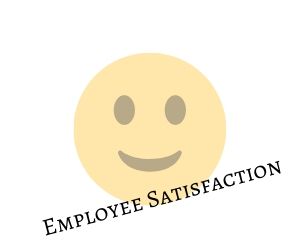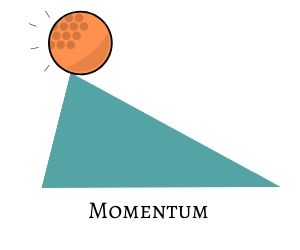A small amount of turnover is a normal part of the evolution of business. Such factors as retirement, health issues, and family-related issues may play a natural role in employee turnover. Yet, it’s highly beneficial to organizations to keep employees from leaving. Why? Employee turnover costs. It costs in:
- Employee satisfaction
- Productivity
- Momentum
- Company reputation
- Profits
Employee Satisfaction:
When a highly-trained individual leaves their role, others then have to complete the functions of that job. (Makes sense, right? That position wouldn’t exist at all if it weren’t a critical role in meeting the company’s objectives.) This causes stress on the individuals having to perform the functions of this opening, while still completing their own job duties. Leaders are pulled into tasks associated with filling the position instead of planning and providing other developmental opportunities for their team.

To determine how turnover of personnel affects the remaining workers in an organization, a study was conducted by the Institute of Behavioral Research at Texas Christian University. They looked at the 353 clinical staff workers at several outpatient substance abuse treatment programs and documented how they felt they were affected by others leaving. Those who were in programs with the highest turnover experienced higher job stress and lower support from leadership. They felt as though there was far less collaboration and communication within the organization.
Productivity:
For the reasons mentioned above, productivity of the existing workers cannot be the same as it would be with every job filled with those responsible for their own job tasks.
The Allied HR IQ’s 2012 Allied Workforce Mobility Survey, reported some interesting findings regarding productivity. This report is a compilation of the thoughts of HR professionals who represent a myriad of company sizes in terms of annual sales and number of employees, and represent such industries as government, manufacturing, retail, service, technology, energy, transportation, non-profit, and professional services.

They found that, on average, it was determined to take about 8 months to develop a new employee to full productivity after having to replace an employee vacating their role. 27% of those surveyed stated that it probably took closer to a year. If it takes 8-12 months to get a new-hire to full productivity, and others have had to take time from their existing roles to train the new associate, there’s no doubt that productivity is directly affected by an employee leaving.
Momentum:

Losing employees means putting a halt to the development of existing associates. As said earlier, when individuals leave a company, others have to pick up their duties while continuing their own. While this ordinarily might actually be an opportunity to learn and develop new skills, since it’s often so stressful, it can become more of a detriment to the company than an opportunity to develop existing talent.
Company Reputation:
It can hurt company reputation. Negative word-of-mouth is always a concern for an organization’s reputation and it’s well-known that those who are disgruntled or have a bad experience tend to talk more about their experience to others, putting the company on the receiving end of their focus in a negative light. Over time, that hurts a brand.

Additionally, studies have shown that turnover within organizations – particularly service companies—can negatively affect the clients’ or customers’ perception, and in turn, result in diminished profits.
A study conducted by Booz & Company looked primarily at service-oriented businesses with both voluntary and involuntary terminations. They studied departures of employees over a 6-year span, reviewing customer feedback about the companies, as well as profits. They found that offices which had the most involuntary and voluntary terminations had the lowest customer ratings in the evaluations. Conversely, those with the lowest overall turnover—including both voluntary and involuntary terminations – had the highest customer ratings. The conclusion was that employee turnover directly correlated to the customers’ view that company performance was suffering. Additionally, those companies who had the lowest customer ratings had the lowest profits and those with the best customer ratings reported the highest profits. Their conclusion? “The offices that remained in the good graces of their clients tended to be about four times as profitable as those whose performance was perceived to wane.”
Whether or not the customer experience was adversely affected or not, customer perception of service had changed as a result of turnover.
Profitability:
As of May of 2019, SHRM estimated that in the US, the average turnover was around 19% per annum. Now let’s look at the cost to replace a person who leaves.
In 2016, SHRM estimated that it took on average about 42 days to fill a given role, with the average estimated cost-per-hire was $4129. In a company of 200 people with 19% turnover, the cost would $156,902!

Estimating conservatively, to replace a single employee, the costs can run between ½ to 2 times their yearly salary. This is taking into account such things as advertising the position, resume assessment time, interview time for all managers responsible for assessing candidates, cost of background checks, the cost of other employees who have to step in to complete not only their own jobs, but the tasks of the position for which the company now has to hire another employee. And then there’s training. (2)
Let’s look at an example of a company with 500 employees. Let’s say that they have only 10% turnover in a given year. Using the estimated $4129 cost-per-hire above, the reasonable estimated cost to the company to replace those who left would run over $200,000! (If you were to use .5-2x the employee’s salary, depending on that salary and specific skills needed, the cost could be considerably more.)
But as we all know, the cost of losing good talent is more than what can be quantified; losing good people in a competitive marketplace means losing creative thinkers… those who help the company continue to grow. If the people leaving are leaders of others, it can be even more devastating to the bottom line because the company not only has to replace the leader with talent that can pick up the specific departmental duties, but there may be loyal relationships between the leaders and those they lead which are difficult to replace.
So, why do good people leave?
To gain insight as to specific reasons for turnover within different industries, let’s look again at Allied HR IQ’s 2012 Allied Workforce Mobility Survey. The HR professionals cited these as some of the main reasons they experience turnover:
- No budget to develop onboarding programs – 10% of those surveyed stated that there were NO onboarding procedures in place and NO procedures in place aimed at retention of employees
- Where there was onboarding, there was no training as part of bringing new associates in
- No on-going coaching or mentoring programs
- No clearly established expectations for new associates- Only 39% of those HR professionals surveyed stated that their companies had a process to set milestones and goals for new associates.
The companies best at onboarding, with a specific budget and outlined programs associated with onboarding, were most likely to keep their employees, develop them in their existing roles to reach their full productivity potential, and then develop them into future company leaders.
We’ve broken out reasons for voluntary employee turnover into the several different categories.
Reasons for Employee Turnover :
Job dissatisfaction
can be a result of the job duties, the perception that the grass is greener elsewhere, or a degree of both. Let’s break them out:
Menial Job Tasks: Dissatisfaction with the job duties can be very common with jobs that are menial, requiring little skill or little variety. People are creatures who seek growth (just look at Maslow’s Hierarchy of Needs on our Foundations of Leadership post if you want to know more about this.) If they don’t have the opportunity for personal growth on the job and don’t see a path to acquire new skills, their job satisfaction can certainly suffer.
Mismatch in Skill Level (Read on regarding job fit.)
Lack of training can lead to the employee feeling that they are under-performing, the employer thinking that the employee isn’t performing like they should, or both. Lack of on-going training or mentoring can lead to employees feeling stagnant with no growth opportunities.
Cultural mismatch: This can be with a small division of their department, the department itself or with the company. An individual who does not feel as though their personality or ideals match with their co-workers can have ugly-duckling syndrome, and will likely look for a place where they feel that they fit in.
Harsh physical environment can also lead to job dissatisfaction.
Little or No Meaningful Connection with Others: We’ve discussed the need for meaningful professional relationships in many other posts. In fact, for many, the best part of their work day is when they have the opportunity to interact with their peers.
Pay/Fringe Benefits
Pay is remuneration for what an employee contributes to a business. If the payment for their contributions is perceived to be low, employees may be tempted to find a company that may pay them better – which would also make them feel more valued. Additionally, if others who do comparable work are paid more, there may be perceived pay inequity.
With today’s technology and the ease at which information flows, employees are often well aware of what the market pays for what they do. They are also able to easily find out what other companies provide in the way of fringe benefits.
Job Fit
If the skills of the employee (soft skills and/or task-related skills) are not a match with the expectations of the job, it sets the stage for turnover, either voluntary or involuntary. This is true for either underqualified or overqualified incumbents.
Let’s look briefly at both:
If an employee lacks the skills needed to do the job, stress will be felt by the employee and the organization until the employee is skilled enough to perform the job. Sometimes, there may be a complete disconnect between the employee’s perception of the time needed for them to ramp up and the employer’s view about the acceptable amount of training time. This creates an environment ripe for either voluntary or involuntary separation.
If the employee is skilled beyond the requirements for the job, the employee may quickly become bored or complacent which, again, can lead to either voluntary or involuntary separation.
Poor Management
Gallup research conducted in 2015, “about 50% of the employees who decide to voluntarily leave their jobs do so to get away from their managers and bosses.” In the same study, Gallup declared that less than one third of Americans are actively engaged in their jobs due to a lack of loyalty to the workplace and 52% of those employees who choose to leave their employer state that their company or manager could have done something to keep them. (Adkins, A. Gallup, 2015).
Influence of Co-Workers
A study conducted in the early 2000’s looked at close to 500 employees spread throughout 15 different organizations. It specifically looked at the employees’ who left their companies and the reasons behind their choices. It found that other workers who had a positive view of leaving their company had a significant bearing on how they themselves felt about wanting to leave. The study concluded that social pressure may play a role, or at least may provide some additional justification for their decision to separate from their employer.
So, with employee retention being so important, how do you keep good talent from going out the door?
6 Ways to Keep Good Employees:
Make Great Initial Hiring Decisions
Hire individuals who are truly interested in a career within the field that the position supports. This can mean employing an individual who aspires to be in a more senior role as they progress on their career path, but hiring a person who sees themselves performing the duties of the job for which they’re being hired – especially for positions which have job duties which are mundane – is essential to keep the positions filled.
Provide Thorough Onboarding
This is one of the best ways to ensure that a new hire gets off to the right start. Providing an orientation allows the new employee to discover details about their new employer. Thorough onboarding aligns expectations. Well-planned training should also be a large part of the onboarding process.
Earmark Funds
…and not JUST for an onboarding program. If reducing employee turnover is truly a company initiative, set aside money to hold events or show that the employees are valued. Use the money to do things that employees suggest in the regular discussions that are held. Save some for training decided on by the employees, as ways they want to grow.
Funds are much better spent proactively taking steps to keep employees happy than incurring the costs associated with filling their role if they decide to leave.
Provide Training to Leadership
Offer training to the leaders in the company on coaching and / or regular meetings with employees to do temperature checks. The first step in leaders working to solve a problem which is keeping an employee unhappy… is to know that a problem exists.
Hold Leaders Accountable
for conducting regular discussions with employees on how they’re feeling about their job, where they want to go, what steps that they see helping them achieve their goals. Have the leaders find out what employees suggest as improvements to the departments. Have the leaders discover what gets their team excited.
Foster Open-Door Culture
Create an where employees can easily go to their leader to discuss concerns that they have about the job and where they feel comfortable doing so.
Additional Question:
What if I’ve done all of this, and an employee still hands in their resignation?
When you’ve done everything possible to keep valued employees and they still decide to leave, employ a good exit interview before they depart. (Just as disgruntled customers at a restaurant want their opinion to be heard, most employees who have one foot out the door want their thoughts to be heard; they usually appreciate being a source of help to the remaining employees, some of whom may be their friends.) You will show that they employee’s opinions are valued, and sometimes, through exit interview discussions, things can be worked out to the point that the employee wants to stay. The employer is all-the-better for knowing concerns, and they don’t have to go through the process of hiring a replacement.
And who knows? If the employee still wants to go, they may be left with a great impression of their departure. In some cases, they may even decide to come back at some point in the future, enabling you to hire an already-vetted candidate.
The 5 effects of employee turnover on a business and 6 steps to take to avoid it

